#macropodia
Text
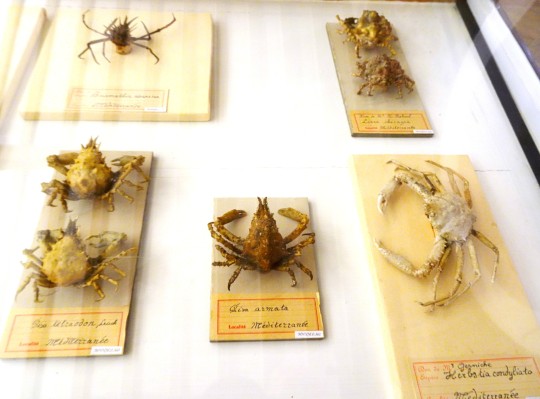
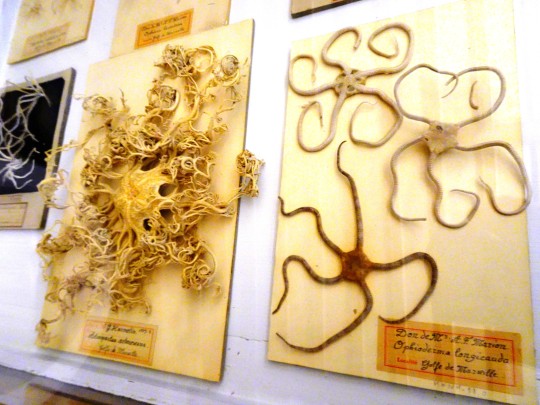

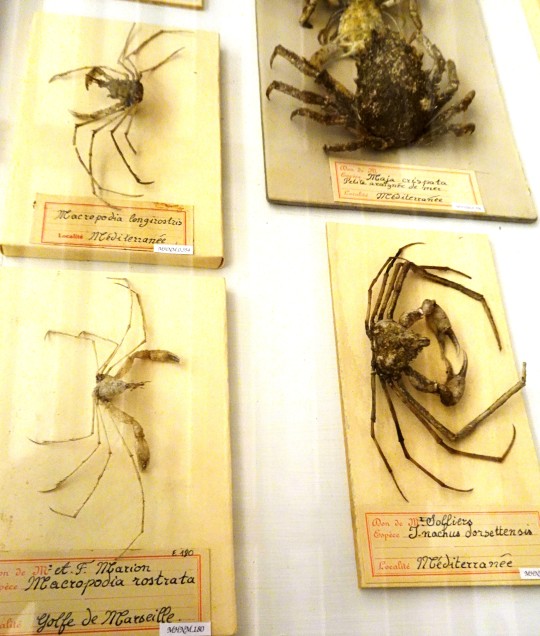

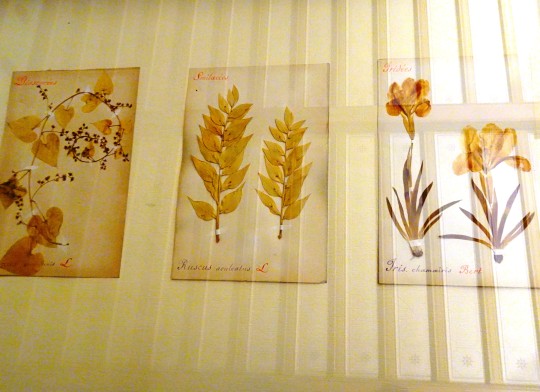

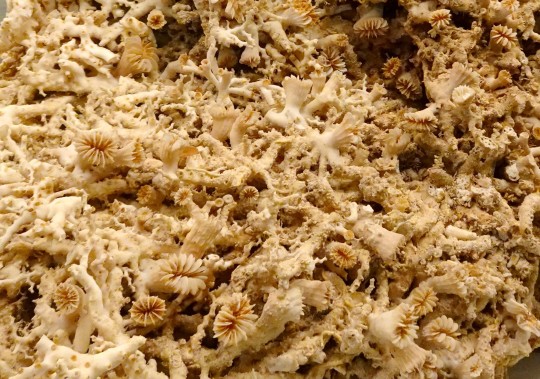
Marseille. Le Palais Longchamp abrite deux musées, ici le Muséum d'Histoire Naturelle.
Crabes Pisa, Herbstia,... (les étiquettes sont là pour être lues !)
Ophiures
Argonaute
Crabes Macropodia, Maja, Inachus,... (voir 1 !)
Tritons
Salsepareille, Fragon petit-houx, Iris... (VOIR 1 !!!!)
Corail blanc
idem
#marseille#longchamp#palais longchamp#muséum d'histoire naturelle#coquillage#mollusques#céphalopodes#argonaute#crustacés#décapodes#crabe#pisa#herbstia#maja#macropodia#inachus#araignée de mer#triton#gastéropodes#botanique#herbier#salsepareille#fragon petit-houx#fragon#iris#corail#cnidaires#corail blanc#ophiure#échinodermes
4 notes
·
View notes
Text
the autism won (got told i was very efficient at identifying crabs)
#one of them was macropodia rostrata i think?#we used a dichotomous key#eddie learns the ocean#marine biology#crabs
86 notes
·
View notes
Text
🇫🇷🇬🇧 Long Legged Spider Crab | Macropodia rostrata
📉15m
🌍Mauritius 🇲🇺
📍Just Diving in Mauritius
📷TG6 - Ikelite - 🔬
🔦Hoozhu V72
#justdivingmauritius #wearepadi #realdiving #coindemire #scubadiving #diving #bainboeuf #pereybere #divingmauritius #tg6 #padi #tauchen #bebestbepadi #grandbaie #mauritius #paditecrecmauritius #ilemaurice #plongee #paditecrec #justdiving #tecrec #olympusphotography #mypadi #underwaterphotography #underwaterphotographymauritius #uwphotography

0 notes
Photo

Brush-tailed Rock Wallabies by H.C. Richter. Gould, Macropodiae, or Family of Kangaroos (1841-42) in BHL: http://ow.ly/mp5H30bkppo
10 notes
·
View notes
Photo

Wallaby Wednesday!
Awhile back on Facebook, Smithsonian Libraries suggested that #WallabyWednesday be a thing. So in keeping with that request, here are two Banded Hare-wallabies (Lagostrophus fasciatus). These were illustrated by Henry Constantine Richter for John Gould’s A Monograph of the Macropodiae, or Family of Kangaroos (1841-42). And BONUS! @smithsonianlibraries contributed this book for digitization in BHLib!
#WallabyWednesday#Wallaby#Australia#Marsupial#WildOz#Smithsonian Libraries#BHLib#Biodiversity Heritage Library#Wallabies#HareWallabies
9 notes
·
View notes
Text
Neglected for over a century, Black sea spider crab re-described
Even though recognized in the Mediterranean Sea, the Macropodia czernjawskii spider crab was ignored by scientists (even by its namesake, 19th-century biologist Vladimir Czernyavsky) in the regional faunal accounts of the Black Sea for more than a century. Now, scientists re-describe this, most likely, sole species of the genus to occur in the Black Sea.
from Tips By Frank https://www.sciencedaily.com/releases/2020/09/200901120731.htm
0 notes
Text
Neglected for over a century, Black sea spider crab re-described
Even though recognized in the Mediterranean Sea, the Macropodia czernjawskii spider crab was ignored by scientists (even by its namesake, 19th-century biologist Vladimir Czernyavsky) in the regional faunal accounts of the Black Sea for more than a century. Now, scientists re-describe this, most likely, sole species of the genus to occur in the Black Sea.
Latest Science News -- ScienceDaily https://www.sciencedaily.com/releases/2020/09/200901120731.htm
0 notes
Text
الحيوانات الجرابية
الجرابيات
الجرابيات marsupials هي حيوانات تحوي جرابا ملتصقة بجسمها. وهي تلد صغارا ككل الثدييات الأخرى، إلا نها تحمل صغارها في جيوبها بعد أن تلدها، تعيش الجرابيات في أميركا الوسطى والجنوبية وفي أستراليا ونيوزيلندا وبعض جزر المحيط الهاديء.
الجيب
تحوي جميع الجرابيات جيبا pouch، إلا أنه مؤقت لدي بعضها، فهو يتشكل عندما يطوى الجلد المنتفخ مؤقتا مشکلا جيباً في أثناء مدة التوالد، ويختفي هذا الجيب بعد أن يكبر الصغير، يوجد هذا الجيب المؤقت عادة لدى الثدييات اللاحمة التي تقطن أستراليا كحيوان القوال.
الجرابيات الحديثة الولادة
تولد الجرابيات وهي عمياء، عديمة الفراء، وذات قوائم وذيل لم يكتمل نموها. وهي تولد بعد مدة حمل قصيرة بحيث لا يتعدى حجمها حجم الملبسة أو قطعة السكر، يزحف الصغير بعد ولادته نحو جيب أمه فتحمله الأم في جيبها وترعاه مدة تتراوح بين سبعة إلى تسعة أشهر، وفي بعض الجرابيات تنام الصغار في جيوب أماتها حتى بعد أن يكتمل نموها.
الجرابيات الأميركية
يوجد 85 صنفا من الجرابيات الأميركية، وهي حيوانات صغيرة إلى متوسطة الحجم، تميل إلى العزلة والنشاط الليلي، وتتدرج مواطن هذه الجرابيات من جنوب شرقي كندا وعبر الولايات المتحدة، ومن أميركا الوسطى إلى الأرجنتين.
الأبوسوم الفرجيني
الأبوسوم الفرجينى Virginian opossum أو العادي هو الأبوسوم الوحيد المعروف في أميركا الشمالية، يبلغ حجمه حجم هر منزلي، وله رداء أبيض إلى رمادي خشن، ووجه أبيض مدبب، وذيل طويل. الأبوسوم الفرجيني متسلق ماهر ويعيش على الأشجار، وعادة ما يجد لنفسه مأوى في تجاويف الأشجار أو تحت الجذوع والجذور، وهو حيوان قارت يأكل كل ما يجده من الثمار والعليق والحشرات والثدييات الصغيرة وحتى المحاصيل المزروعة.
الجرابيات الأسترالية
الجرابيات هي أكثر الثدييات انتشارا في أستراليا، يوجد في أستراليا أكثر من 300 نوع من الجرابيات، أشهرها الكنغر والكوالا والؤمبت.
الكنغر
ينتمي الكنغر kangaro0 إلى عائلة كبيرات الأقدام macropodia وتضم هذه العائلة أيضا الولب وكنغر الأشجار والولّرواليدملون وغيرها، يوجد إجمالا 63 صنفا من كبيرات الأقدام، أكبرها الكنغر، الذي لا يوجد إلا في أستراليا، للكنغر قوائم خلفية طويلة، وذيل طويل يعمل كقائمة خامسة في أثناء سير الكنغر، ويساعده على الحفاظ على توازنه عند قفزه.
أصناف الكنغر
توجد أربعة أصناف رئيسة للكنغر هي الكنغر الأحمر، والكنغر الأيلي، والكنغر الرمادي الشرقي والكنغر الرمادي الغربي، والكنغر الأحمر هو أكبر أصناف الكنغر.
الكوالا
الكوالا koala أو الكوال هو من الجرابيات الأسترالية المتسلقة للأشجار، يقضي الكوالا جل حياته على أشجار الأوكالبتوس متغذية على أوراقها أو نائمة بين أغصانها. يلتهم الكوالا 454-680 غراماً من أوراق الأوكالبتوس يوميا، وينام 18-20 ساعة في كل يوم، ويوجد نوعان من الكوالا : الشمالي والجنوبي، والكوالا الجنوبي أكبر حجما من الكوالا الشمالي.
الكوول
الكوول quoll حيوان لاحم وصغير من الجرابيات يعيش في أستراليا، يعرف أيضا باسم القط البلدي في أستراليا، توجد منه أربعة أصناف هي الشمالي وأرقط الذيل والشرقي والغربي.
الولب
الولب wallaby أصغر بقليل من حيوان الكنغر ، يعيش ويتكاثر في أستراليا وأجزاء من نيوزيلندا. ينقسم الولب إلى ثلاث مجموعات استنادا على بيئته الطبيعية. حيت أن هناك ولب الشجيرات ، وولب الأجمة، وولب الصخور.
The post الحيوانات الجرابية appeared first on عالم الحيوانات.
from WordPress https://ift.tt/2GQZ8qJ
via IFTTT
0 notes
Photo

As I just learned from dive enthusiast @eduello this type of #crab is called a Macropodia rostrata or long-legged spider crab. You commonly find off the Dutch and Belgium coast. #crustacean #crab #sealife #spidercrab #underwaterphotography #underwater #scuba #scubadiving #uwphoto #scubadive #ilovediving #sealife #underwaterphoto #underwaterworld #uwphotography #duikeninbeeld #underwaterphotographer #uwpics #ikelite #tauchen #duiken_magazine #onderwater #underwater #duiken #divephotoguide #scubagram #fotosub #buceo #marinelife #underthesea #natgeo #nature #naturephotography #sea #sealife #water_of_our_world #pictureday #pictureoftheday #instagood #instadaily #aquaticadigital (bij Duikstek Anna-Jacobapolder)
#uwpics#nature#natgeo#underwaterphotography#sealife#underthesea#scubagram#buceo#instagood#underwaterphoto#underwater#duiken#crab#fotosub#ilovediving#pictureoftheday#spidercrab#marinelife#pictureday#uwphotography#water_of_our_world#sea#scubadiving#naturephotography#duiken_magazine#divephotoguide#uwphoto#instadaily#underwaterphotographer#ikelite
0 notes
Text
Retro Fandom Friday – Bring us the head of Harry Parkhurst!
Today, we’re looking a few of the highlights from the letters section of the Spring 1945 issue of Planet Stories. One thing that virtually every Vizigraph I’ve read has had in common is an overwhelming dissatisfaction with Parkhurst’s cover art. And I can’t say I blame them. While Parkhurst has some fantastic covers to his name (several of which can be viewed here), he frequently failed to bring his A-game to the covers of Planet.
But what did women have to say about the dames on Planet’s cover? Well, I won’t say she speaks for all of them, but Virginia L. Shawl weighs in:
So your Vizi-fanners do not like undraped females? Heh, heh, heh, she laughed wickedly. Are you men or robots? What I dislike is striking one goshawful cover out of every three. The type of cover that you have to buy a newspaper to cover it up with until you get home. The exterior on the Winter issue is a good example. The heroine was completely out of proportion to the monster holding her. And the hero looked as tho he had been drained of fifty percent of his IQ.
Virgina had a point, too. Parkhurst had lousy composition in many of his pieces, and the cover in question is an egregious example. As Chad Oliver concurs—“do you look at those cover, or just clap ‘em on quick to spare the eyes? Or didn’t you honestly think Parkhurst’s current effort was amusing?”
Tom Pace also has some things to say about the art:
…the first Planet I ever saw was the Fall, ’43ish. It had a cover on it that is one of the best I have ever seen…. Rozen’s, of course…next issue, the Winter one, had a Gross, a step down from Rozen, but still pretty good. Especially the dame. Then came Ingels, and I frowned a trifle. But annudder sweet damsel…dams…damse…tomato.
Then Gross returned again, with a luscious brunet beauty…and the awfullest monster I have ever seen in the way of a BEM.
And now, Parkurst, and a step down from the Summer cover. Please, what yarn did it illustrate? And boiled lobster, yet…”
On the other hand, Loretta Adele Beasley thinks
The cover BEMS were swell this time, better than average. So was the girl. I’m glad to see she had some meat on her bones.
Augustus Elliott Kinkade disapproves of the choice of other magazines to go “military”, and clamors for more Brackett:
“I’m glad P.S. has not gone “military”, like a certain one-time competitor—stories, reader letters and illustrations all by military personnel. Also, I’m delighted that P.S. shows no sign of picking authors because they have small (pin?) heads and very large feet (micrencephalia and macropodia), as the editor of the militarized competitor avows that he does. [That a “Rap”, eh?]
One criticism: Neither issue has a Brackett tale. I’ve seen our Leigh’s picture, so know she is not afflicted with micrencephalia or macropodia—besides she’s not a WAC—hence can not have been “Kidnapped” by this alleged, militarized competitor. Her last P.S. tale Terror out of Space was fine; but her Jewel of Bas was an epic.
Not quite the smoking gun of an editor correcting someone on Brackett’s gender, but more proof that it was no secret, certainly.
Also, not everyone was buying what Damon Knight had been selling; Everett Marshall dumps on one of Damon’s circle:
I’m laughing, my friend. Not at you, nor again at Planet Stories, but at one yclept Damon the Demon, who has a letter in the Vizigraph. Now I don’t expect you to recall one letter out of the junk heap, so I’ll elucidate: it seems that this Damon has a friend by the name of Fleming, who sold you a story. Damon has been watching Planet, looking for aforementioned opus, and in the course picked up the Summer Issue, read it, and shipped you a letter of critique theron.
And what sayeth our Knight? Well, in reference to a certain tale called “Warriors of Two Worlds,” by a certain Wellman, he pens: “If anything I’ve read ever justifies the name of “hack” this is it. Reading the thing, I could almost feel Wellman’s mighty mechanical brain whirring effortlessly along…the style is smooth, like a thick coating of gelatin over the rough, ugly shape of plot and background.” And so on.
I’m laughing, pard, because I’ve just read that story by Stuart Fleming in the new issue. And the paragraph quoted above is as good a criticism of “Doorway to Kal-Jmar” as anyone could write.
Lastly, Bob Lambert’s remarks are why we need Alt-Furry:
“[Basil Wells’] The Hairy Ones” stinks. How could any hero in his right mind go for a dame that was covered with fur? I’d skin ‘er and make a rug for my den.( Some rug that would be, according to the picture.) I’m just a vicious character, I guess.
Retro Fandom Friday – Bring us the head of Harry Parkhurst! published first on http://ift.tt/2zdiasi
0 notes
Text
Japanese Spider Crab
The Japanese Spider Crab has the longest leg span, reaching up to 5.5 meters (18 ft) from claw to claw, of any arthropod.

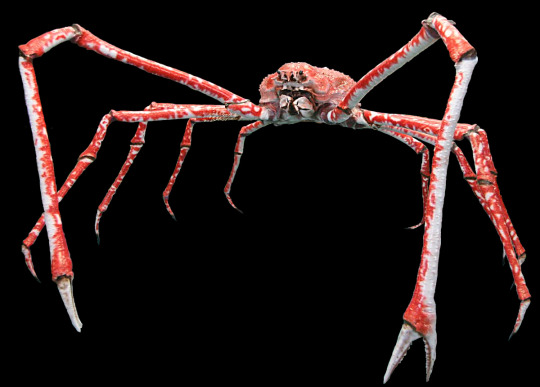
Taxonomy Classification:
Kingdom: Animalia
Phylum: Arthropoda
Subphylum: Crustacea
Class: Malacostraca
Order: Decapoda
Infraorder: Brachyura
Superfamily: Majoidea
Family: Inachidae
Genus: Macrocheira
Species: M. kaempferi
Its scientific name is Macrocheira kaempferi.
They are mostly seen on the Japanese island of Honshu, Iwate Prefecture,and Taiwan. The species tolerate temperatures from 6 to 16 degrees Celsius, but they prefer temperatures from 10 to 13 degrees Celsius. The Spider Crabs are omnivores, therefore, they eat plants and animals. “Female crabs carry the fertilized eggs...until they hatch into tiny planktonic larvae.” The planktonic larvae process depnds on the temperature(preferably 12 to 15 degrees Celsius) and can take about two months. In that stage, they are small and legless. “usually drifts as plankton at the surface of the water.” The crabs normally keep to themselves. They hunt alone and there communication between each other is unknown.
Evolutionary Origin:
“Among the 36 species found in the Koskobilo quarry, the researchers uncovered two of the oldest spider crabs yet discovered, Cretamaja granulata and Koskobilius postangustus. Spider crabs are marine crabs with pointed heads, thick bodies, and long, gangly legs. Today, there are nearly 1000 species of spider crabs, representing a good portion of the 15,000 existing decapod species (De Grave ea. 2009). They can vary in size anywhere from less than one centimeter in length (like the European long-beaked spider crab, Macropodia rostrata) to a 13-foot leg-span (Macrocheira kaempferi, the Japanese giant crab.) The discovery in Spain leaned more towards the smaller size: Cretamaja granulata was 15 millimeters in length for the central part of the crab (known as the carapace). The fossil shows it had a pear-shaped carapace from which extended two diverging spines. The discovery lengthened the evolutionary timeline of spider crabs by millions of years.”
https://en.wikipedia.org/wiki/Japanese_spider_crab
http://eol.org/pages/2924326/details
https://evolution-institute.org/article/ancient-reef-housed-oldest-spider-crabs/
0 notes
Photo

Araña de mar II by MartnDgenadelaSelva Macropodia Rostrata , ejemplar " vestido " elegantemente a base de pequeñas esponjas y líquenes .
22 notes
·
View notes
Text
Decorator crabs accessorise seaweed to avoid being eaten
Decorator crabs accessorise seaweed to avoid being eaten
If there’s one thing we have in common with these crabs, it’s our keen sense of fashion. Many of us love to don new clothes, wear jewellery or get tattoos and piercings. So it is with the decorator crabs. About three-quarters of over 900 species of crab in the family Majoidea decorate themselves, making them perhaps nature’s most fashion-conscious animal. Species: Decorator crabs (superfamily…
View On WordPress
1 note
·
View note
Photo

Simbiosis by MartnDgenadelaSelva Macropodia Rostrata y Balanus Balanus
6 notes
·
View notes
Photo

Araña de mar by MartnDgenadelaSelva Macropodia Rostrata que por el tamaño , color y falta de " ropa " de camuflaje creo que es un juvenil .
5 notes
·
View notes
